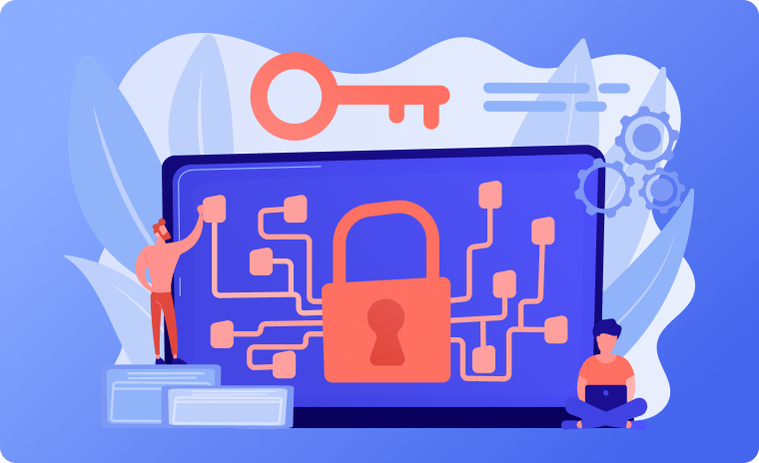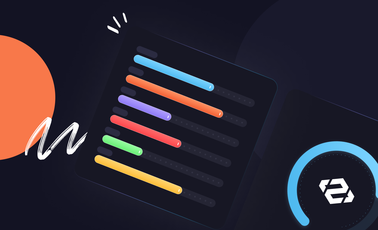Web 3.0: The Better Internet?
We are currently at an inflection point in the internet technology or standing at the edge of a drastic change. New and maturing technologies such as Virtual/Augmented Reality (VR/AR), Artificial Intelligence (AI), and blockchain are converging to revolutionize the internet. Not only that, but there is a will among people to change the way the internet has operated for more than a decade because they feel intimidated and even threatened by what has come of it.
It wasn’t always like this, though. When the internet appeared in the early 90s, it was seen as an inclusive, egalitarian breakthrough that would facilitate access to information for all of humanity. It was a one-way street back then—the internet technology was read-only, whereby you typed in the web address of the website you wanted to visit and consumed information, and that was pretty much all that there was to it. Today, this period of the internet is defined as Web 1.0.
Web 2.0, which entered our lives in the mid-2000s, transformed the way people used the internet and turned it into one of interaction. The internet was no longer read-only, but it was read-write. Search engines were the drivers of this change early on, only to be joined by social media platforms later. People became content creators, and companies that monetized the user-generated content came to dominate the internet, becoming some of the most valuable brands in all of the economy. The size of data people revealed on this network kept growing over the years, and it was this very phenomenon that created the uneasiness toward the internet lately.
The growth of platforms owned by Google, Apple, Microsoft, Facebook, Twitter, and Amazon brought about the accumulation of data in the hands of these companies. If knowledge is power, then it follows that these companies came to wield disproportionately immense power over the society, people and businesses alike. Just imagine losing access to or being locked out of an account you had on one of these platforms and how much trouble that would cause for you, and it becomes easier to understand the kind of clout these companies carry.
Privacy is one of the main concerns of internet users today. Personal information shared on such platforms can come back to haunt individuals as Big Tech companies depend on the monetization of such data for revenue generation. Google and Facebook are particularly greedy in the amount and type of personal data they store. The ostensible reason for this data hoarding is to improve the product, services, and user experience. However, it serves well to keep in mind that the business models of these two giants are based on turning this data into targeted ads. People willingly share with these platforms their name, email address, phone number and payment information. These platforms can use the information you voluntarily gave them and track your interactions with other people on the platform to correctly profile you and share that data with third parties, which is where things can get a little bit unpleasant.
The opaqueness in the way Big Tech companies handle user data has always been an issue that garnered attention. But it was with the Cambridge Analytica scandal that people faced an example that illustrated the possible ramifications of harvesting of user data without user consent. An investigation carried out in 2018 revealed that the British consulting firm Cambridge Analytica had used an app to harvest data of as many as 87 million Facebook users to build their psychographic profiles. This psychographic data was later used to aid the presidential campaigns of Ted Cruz and Donald Trump. Combined with the alleged Russian efforts to use influence campaigns over social media to meddle in the U.S. and French elections, it became easier for the regular citizens to connect the dots and realize how data security and privacy were linked to the survival of democracy.
Web 2.0, as it is now, has all the flaws of the society, only magnified by several orders of magnitude. The asymmetry of power we suffer from in our daily lives vis-à-vis the government can easily be aggravated in a scenario where Big Tech companies can collude with governments to turn life into a living hell for citizens. Combining the data collected by the former with the latter’s coercive power can be the recipe for a dystopian surveillance state. This state can then use the data provided by the Big Tech companies to curtail and push back against individual rights.
This is the main danger which Web 3.0 is expected to mitigate. Web 3.0 is a decentralized network that leverages peer-to-peer connectivity. The peer-to-peer character of Web 3.0 ensures that data is not owned by anyone but shared, which negates the need for a user to trust anyone with his data. This means that there will be “no middlemen, government eavesdropping or walled gardens.” As technologies such as AI, AR, IoT, 5G data transmission, and machine learning mature, Web 3.0 will be able to synthesize data to provide its users with more relevant information, and the line between the physical and digital phenomena will get blurred.
However, nothing is set in stone at the moment. Nobody knows what kind of regulations will apply to a decentralized network like Web 3.0 and how they will be enforced. This ambiguity in regulations will undoubtedly hamper efforts to rein in crimes such as money laundering, online harassment, or child abuse.
While there is hope that Web 3.0 will turn out to be the democratic utopia everybody hopes for, it may as well turn out to be a network of “platform-defined, walled-garden Spatial Webs” owned and governed by a small group of large companies, which wouldn’t be much different than the Web 2.0 experience. We can only hold out hope that the lessons learned from the Web 2.0 saga will lead to a more egalitarian technology that will take us closer to the ideals of the World Wide Web when we first encountered it thirty years ago.




 Please
fill out this field
Please
fill out this field









